Stirling Castle. Pearl of Scotland (part 1)
Castle Stirling. View from the valley. As you can see, the talk about his inaccessibility, though not 100%, is not empty words. Getting from this side to him was far from easy.
Well, to begin the story about this castle should, of course, be like this: the one whom, by the will of fate at least once in life, has brought to Scotland, in its central part, the castle of Sterling will need to be seen. Powerful walls, a majestic view, amazing architecture and even more amazing history - this is all he, the castle Stirling!
Undoubtedly, this castle is one of the grandest buildings of Scotland. List all the advantages of the castle is difficult. He is stunning with his stern greatness from the first minute of dating. It seems that the castle gazes from the high and inaccessible cliffs on the ancient city of Stirling, which was once the capital of the Scottish kingdom.
Once upon a time Maria Stewart was crowned in him. Chronists write that during the ceremony, Maria bitterly cried. And it is not surprising, because the queen at that time was only nine months.
But in fact, the history of these places dates back long before the Stuarts dynasty, and it is also very special.
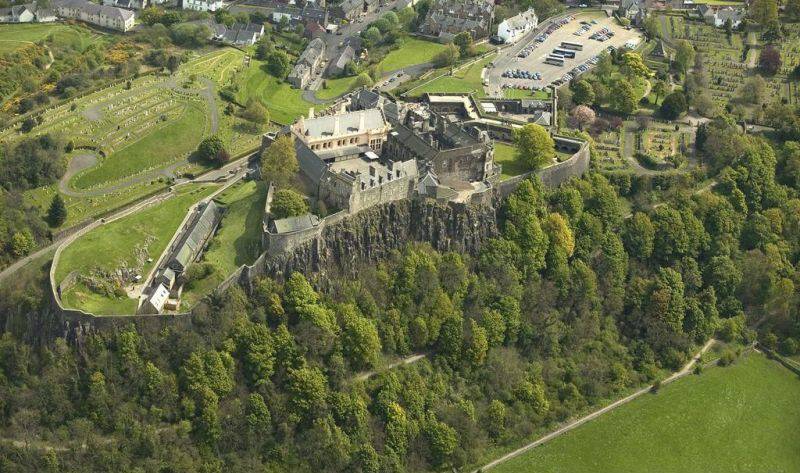
View of the castle from a bird's eye view. One can clearly see the rocky foundation of the wall and the well-chosen place for its construction - at the very top of the hill.
First of all, the place for the construction of the castle was chosen not quite normal: the top of a long extinct volcano in height 75 meters. It was she who served as a great platform for construction. From the summit there was a stunning view of the curving river below the Fort, the rolling fields, and the hills covered with forests. This small piece of land, from which, if desired, you could paint pictures on pastoral themes, was idyllically beautiful, but at the same time strategically important for Scotland. At one time, both the Celts and the Romans, who looked from the summit of these rocks to the lands they had not conquered, visited here. After the Romans left, this land became a stumbling block between picts, scandas, Britons and Angles.
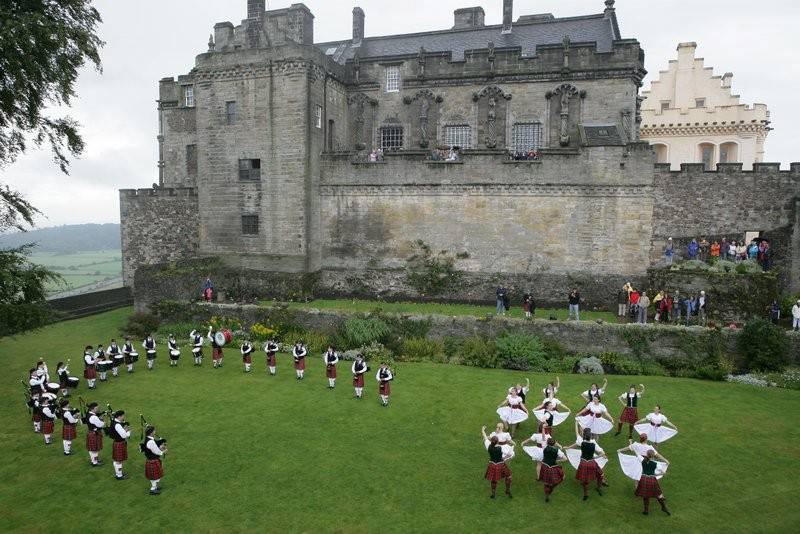
Lawn in front of the palace. Now it has become a place of national songs and dances.
In all likelihood, Scotland became united after the defeat of the Picts in 843, by the Scottish monarch Kenneth McAlpin. Subsequently, in the process of merging, the Picts mixed with the Scots, as a result of which a new nationality appeared - the Scots.
The chronicle history of the castle dates back to the 11th century. In the records of King Malcolm III Kanmore, Stirling is mentioned exclusively as a military structure. In 1072, the troops of Malcolm III and William the Conqueror met here to fight. The battle did not take place because ... the parties went to the "world". The outcome of the peace agreement was the tribute that Scotland had to pay the English monarch.
Here, perhaps, even the Gauls would not have climbed ...
In the XII and XIII centuries. The castle belonged to the Scottish kings, peace and economic stability reigned in Scotland, but despite this, construction work was going on at full speed in the castle - although, as they say, nothing foretold trouble. In 1286, the monarch dies suddenly, and four years later, in 1290, his granddaughter Margaret, eight years old, who was the only heir to the throne, died from Norway to Scotland. Scotland remains without government. And those who wanted to sit on the throne were more than enough. The country was brewing distemper ...
A struggle for power began to unfold among the nobles. In an effort to save the country from strife, Edward I of England was invited as an arbitrator, who swore an oath that he would recognize the Scottish crown. In 1291, he briefly arrived at Stirling. It was then that the Scottish nobility gave him the oath and swore allegiance. A year later, the throne was transferred to the loyal England John Ballyol, although there was another candidate for the crown - Robert the Bruce.
At the end of the thirteenth century, Stirling was again at the center of the military confrontation between England and Scotland. In 1296, the castle was captured by the English king Edward I. For less than a year, the castle was in his hands, until the brave Scots, gathering their strength, went to war against the British king and returned the Stirling back.
Edward, of course, was not going to give up the conquered so easily. For six years, he tried to break the recalcitrant Scots, and beat off the castle. And in April 1304, Edward pulled the army under the walls of the fortress. In addition to well-armed warriors, the British army had at its disposal several special throwing machines with the number of 17 units. For four months the castle was under siege, continuously shelled by lead and stone cores and watered with “Greek fire”, which was a hellish fluid mixture of crude oil, sulfur and oil! Not even the “Greek fire” to Eduard did not help, and then he threw into battle the demands - the colossal dimensions of the stone-throwing machines capable of firing 140-kilogram stone cores and breaking powerful fortress walls with them.
Only 20 July 1304, the siege of the fortress ended, but she did not give up, because there was no one to surrender. Thirty brave warriors, ardently loving their little Scotland and compatriots, the fearless and desperate defenders of the castle died defending their walls.
But the most significant event in Scotland happened in 1314 year. Then the battle of Bannockbourne took place between the armies of the Scottish king Bruce and the English king Edward. The battle was only three kilometers from Stirling. The result of this battle was the complete defeat of the army of King Edward.
For more than a decade, the citadel with an enviable constancy passed from the Scots to the British and vice versa. The fortress walls were built on, and then broken, strengthened and rebuilt according to the wishes of the next owner, the nature of hostilities and weaponsused during the battle.
Running a little ahead, it is worth noting that in 1869, in order to pay tribute to the victory of the Scottish troops, commanded by William Wallace, over the British in a battle near the Stirling Bridge, a Wallace monument was created, made in the form of a five-tier tower, resembling a Scottish crown.
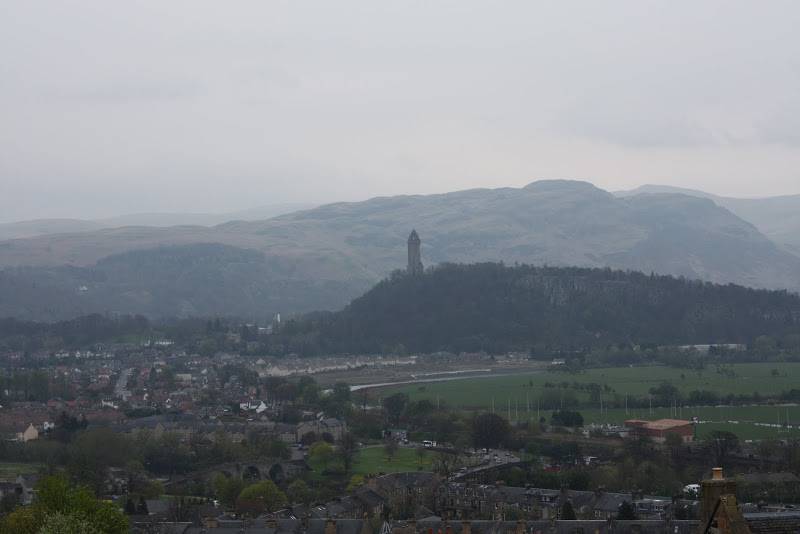
The fortress walls offer a view of the 67-meter monument in the distance, to the national hero, Scottish independence fighter William Wallace.
Wallace completed his earthly journey in 1305. That year he was captured, brought to London, convicted of treachery and betrayed by savage execution - he did not ask for quartering and repentance to the English king, although he would have begged for an easier death.
XV century for Sterling turned out to be relatively calm. The royal family lived in the castle, which did not want to fight, but, on the contrary, preferred a quiet, measured life to wars. Therefore, knightly tournaments were arranged in the royal residence, guests were received, and fun was going on. King Jacob III, who lived here with the most august family, loved his residence ardently, and therefore he was constantly completing something, landscaping, improving. Within the limits of the castle, Jacob built the Great Hall, called the Parliament Building, and once again redid the castle church.
Many buildings of the castle have been restored and look like new, but it does not spoil them.
Under Jacob IV, the castle walls and the Grand Palace were rebuilt. Jacob IV had a reputation among compatriots a great lover of the sciences, art and literature. During his reign at the castle, they accepted all those who came to the king, among whom were completely suspicious personalities who ardently assured that they were able to reveal (yes!) The secret of the philosopher's stone, and the sovereign ... gave them shelter.
Hall tapestries in the royal chapel.
In Sterling spent his childhood, King James VI of Scotland (James I. English). During the regency, the champions of Mary Stuart were besieged the fortress more than once. As a result, within the boundaries of the fortress, some buildings were damaged, among them the Royal Chapel. Actually, Jacob took up her restoration, since it was necessary to baptize his son Henry. The ceremony was unusually solemn. And the “highlight of the program” of the holiday in the castle was ... a luxurious ship crammed with fish. He “swam” into the Great Hall, where guests invited to the feast made noise, drank, ate and danced. All seemed dumbfounded from what he saw. Everyone wanted to personally see, and if possible touch, such a wonder. The ship, as a memory of that event, was kept in the fortress for 200 years.
Interior of the royal palace.
Well, and when the celebrations ended, and the king's son received an English name, the sovereign began to lay claim to the English throne, on which Elizabeth I, who had no children, sat at that time.
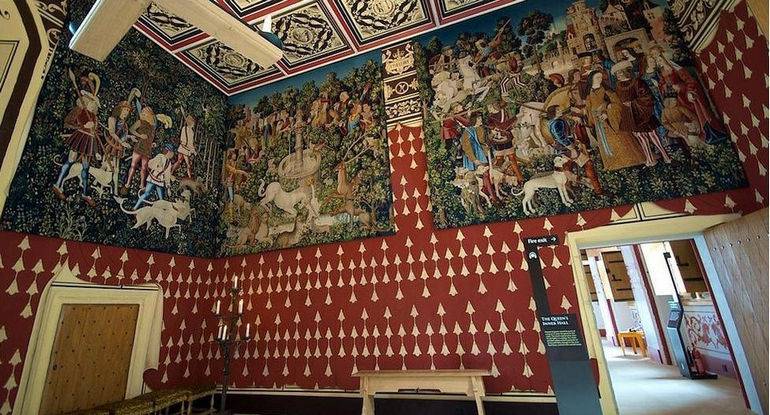
Tapestries on the walls are made anew, but are an exact copy of the old ones.
After moving Jacob VI to London, Stirling began to gradually collapse. In such a dilapidated form, he stood 22 of the year, and only in 1617 year, especially for the king's visit, he was put in order. Jacob visited the residence, wandered through the empty halls and departed. And soon came the sad news that James VI died. And again, long 16 years, the ownerless castle was empty, and only in 1633, the son of Jacob Charles I arrived in Stirling. Then the castle from the royal residence by the will of fate (and the decision of Charles) again became a fortress.
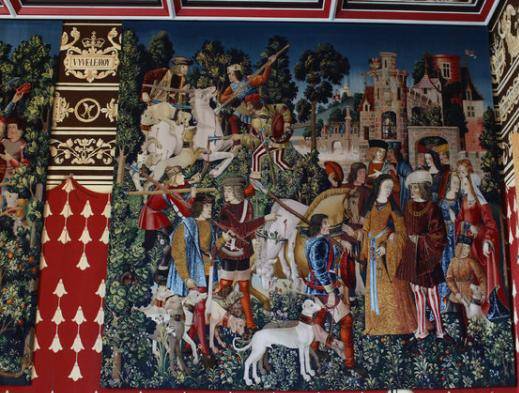
The quality of the work of the then masters and today's restorers is amazing.
Royal Hall with a throne.
Having survived many battles and sieges, its walls were badly damaged. In February, 1681, the future king, Jacob II, visited Scotland and saw Stirling in a miserable state. The Fort was repaired, and after four years, in 1685, the castle was renovated and restored to receive the status of a military base. A little later, an artillery tsekhgauz was organized here, and, accordingly, part of the outbuildings of the castle was set aside for warehouses of weapons and ammunition ...
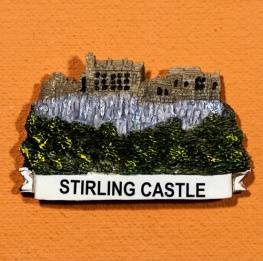
But the “magnet” on the fridge with the image of a lock is made crazy and without fantasy - anyhow, just to take money from people!
To be continued ...
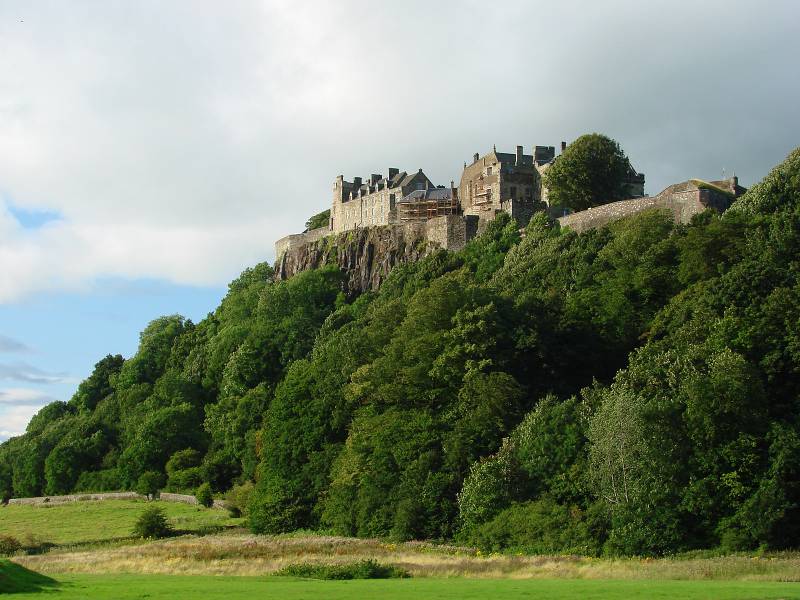
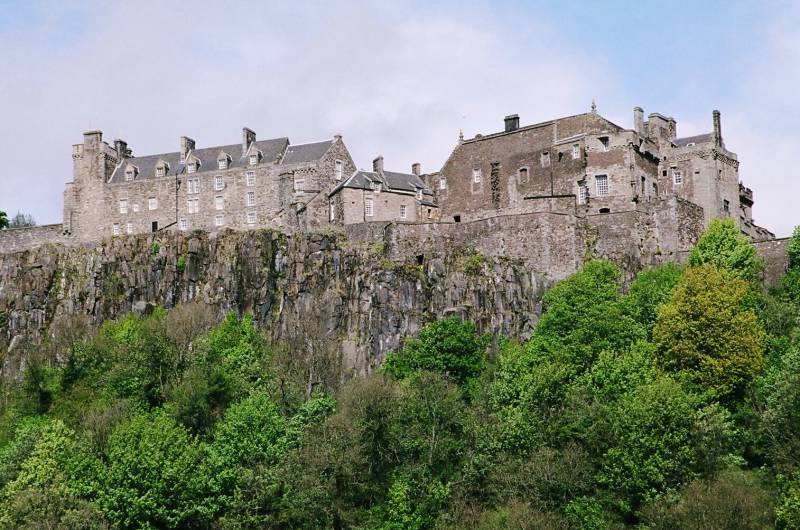
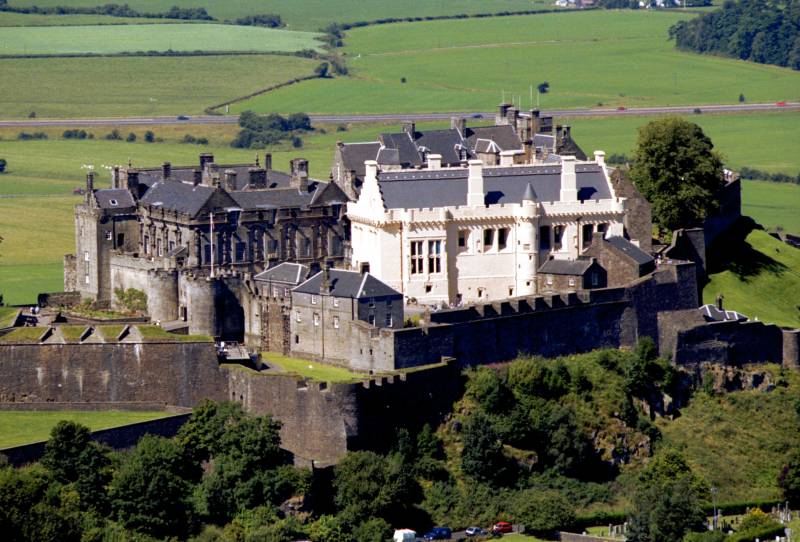
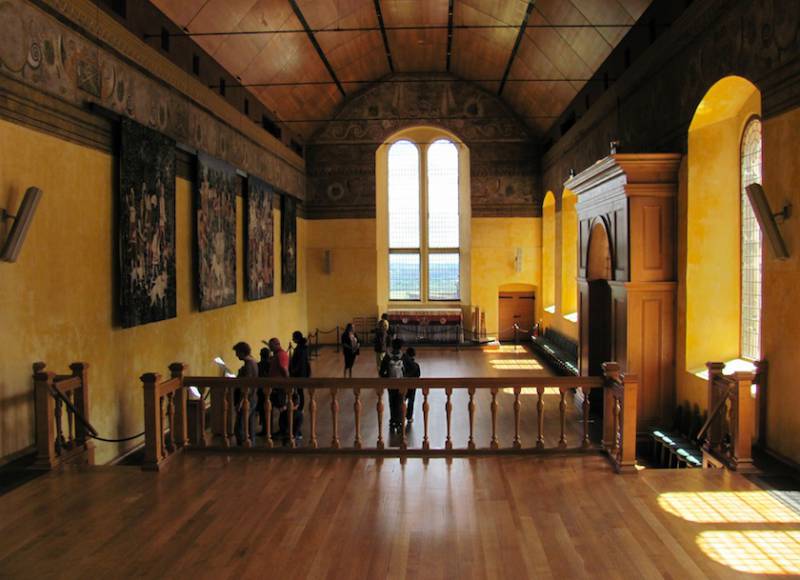
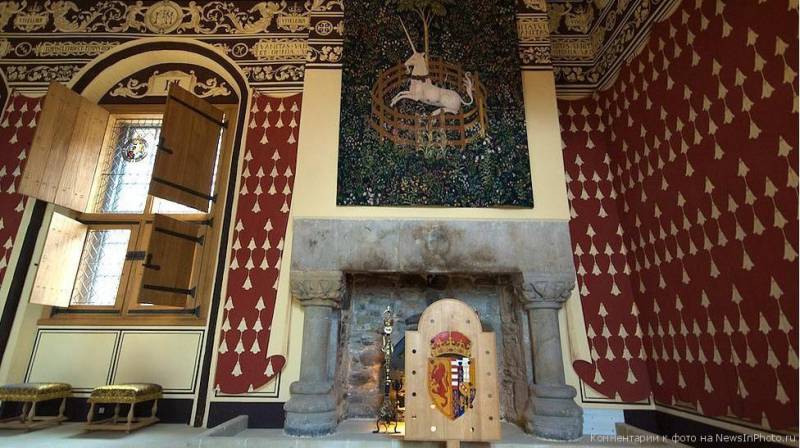
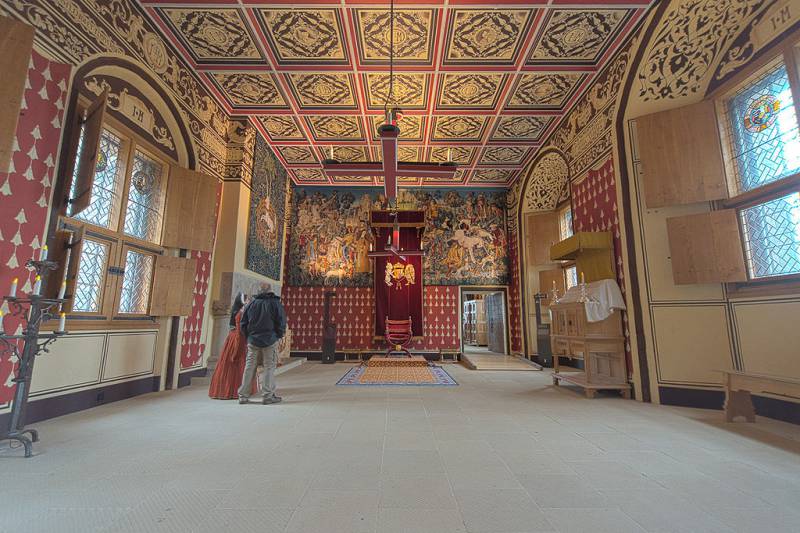
Information